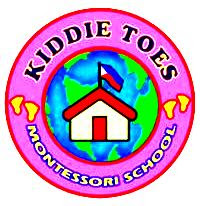It’s not easy being a parent. No matter if you work outside the home, inside the home. No matter if you have one, two, three or fifteen children. No matter if you have a small house in a big city or a big house in a small city. No matter if you have money or very little money.
Raising children is hard work — at least it is if you are doing it right.
It’s really no wonder parents are spending more time than ever checking in on Facebook, smart phones, or doing project after project after project. It helps to have something to do rather than sit around and dwell on all the stuff we want to be able to do or used to be able to do but no longer can. This self-medicating with social media is harmful — as Rachel at Hands Free Mama has said so eloquently this week on her blog.
And yet our children don’t care how fancy we are as parents, or how many messages we get in an hour about our blog. The smaller they are the more they need us. The bigger they are, the more they need us. Sometimes, the more they need us, the more we want to slink away and find some blanket to crawl under. But it doesn’t have to feel that way.
Breaks for parents are absolutely essential. Absolutely.
There is a time and place for media and screens and technology. And there is a time and place for NO media and NO screens. It’s about being conscious, as a parent and a human being, about when and how we are turning to the computer or TV for simply boredom or laziness or seriously trying to avoid our lives.
To truly be awake to this life — these fleeting 18 years — we have but one choice to make each day: embrace our blessings and honor those around us. Practicing mindful choices each day is something that we have to model for our children or else they, too, will end up staring at screens all too much in their own life (like that picture above!).
There are many ways that you can just be with your children that are not hard work, that are not challenging or tiresome. By just being there, you may discover that your child will reach out to you simply because you are suddenly available. The magic in this list is that it’s just simply being together for a solid half hour or so but it offers up the most beneficial memories we can offer to children.
Here are some of our family’s favorites:
- Turn off the TV/computer/phones for one hour. (In our house, we limit daily screen time to a total of one hour except on movie nights).
- Have a work hour — they do homework and you work on a hobby like art or reading while sitting at the same table.
- Just listen to music. At our house, we call this a dance party.
- Light a candle for your children — one each.
- Surprise them with a celebration for trying hard on a test or homework and eat store bought cookies and milk.
- Sit on the couch while they play and read magazines. They will sit next to you eventually and ask, ”Whatcha reading?”
- Grab two balls and challenge everyone to find something fun to do with them outside.
- Snuggle under a blanket or put a puzzle together.
- Whip up a nice bowl of ice cream and laugh while you eat it.
- Watch TV with them if they insist on watching.
- Ask them open-ended questions about their day.
- Tell them something surprising about your day.
- Draw together, taking turns adding new lines on the same paper.
- Take a drive, taking turns picking the direction and sitting in silence as the unfamiliar landscape passes you by.
- Look at their baby photos.
- Tell them a funny story from their younger days.
- Tell them a funny story from your own childhood.
- In fact, tell them any story you can think of telling.
- Ask them to teach you how to do something. This is big. Very big.
- Ask them questions about their favorite things.
- Help them clean their room or the basement or the garage. Whatever. Lend a hand.
- Ask them for help with a problem.
- Hold a family meeting to just catch up.
- Announce that there will be no cleaning for just one day.
- Give them a coupon for a hug to use anytime they need it.
What kinds of things do you like to do with our family to just relax and be together with little expectations?
Source:
http://awesomelyawake.wordpress.com/2012/01/24/25-ways-to-just-be-with-your-children/



